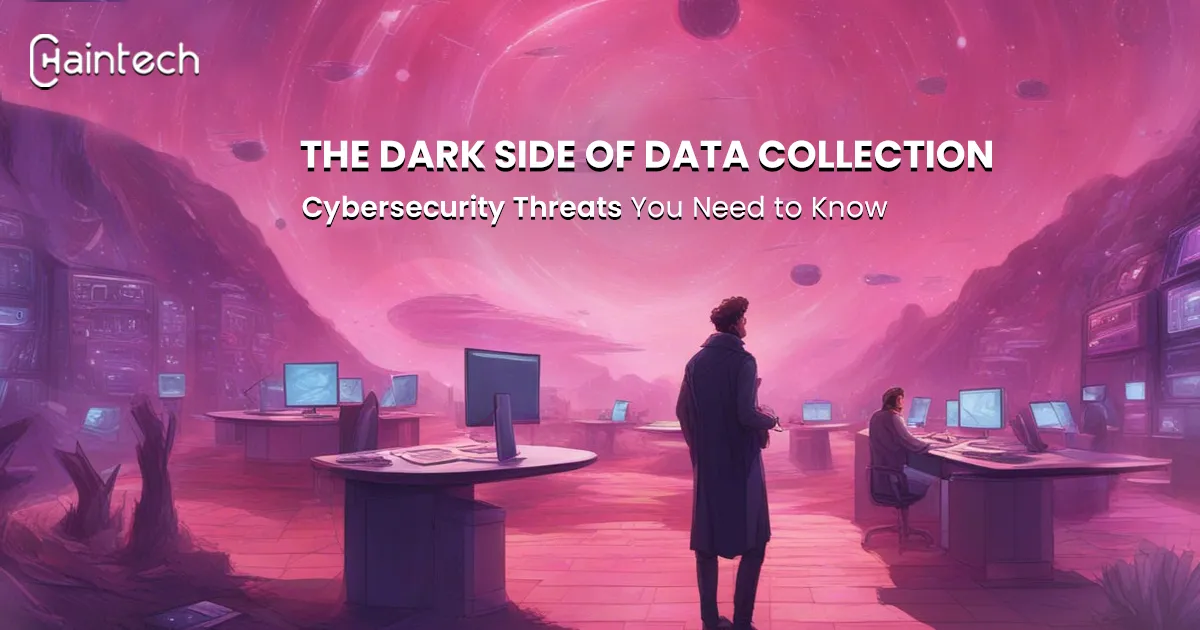The Dark Side of Data Collection: Cybersecurity Threats You Need to Know

In today’s digital age, data collection has become ubiquitous, with organizations gathering vast amounts of information from various sources. While data collection offers numerous benefits, such as targeted marketing and improved services, it also presents significant cybersecurity threats that can compromise individuals’ privacy and security. This article aims to shed light on these risks and provide insights into how individuals and organizations can navigate the dark side of data collection.
Data Collection: The Good and the Bad
Data collection holds immense potential for shaping the modern world. By analyzing data, businesses can gain valuable insights into customer behavior, enhance operational efficiency, and drive innovation. Additionally, data collection fuels research and the development of new technologies that benefit society at large.
However, the same data that offers convenience and innovation can also pose significant dangers. The sheer volume of data collected raises concerns about its security and potential misuse. Without proper safeguards, personal information can be exposed, leading to identity theft, financial fraud, and other malicious activities.
The Different Types of Data Collection
Understanding the types of data collection is crucial to grasp the scope and implications of cybersecurity threats. Three prominent forms of data collection are prevalent in today’s digital landscape:
Personal data collection
Personal data collection refers to gathering information about individuals, including their names, addresses, contact details, and online activities. This form of data collection often occurs when users interact with websites and social media platforms, or fill out online forms. Unauthorized access to personal data can have severe consequences, such as identity theft and online stalking.
Big data collection
Big data collection involves collating large volumes of information from multiple sources to analyze patterns, make predictions, and derive insights. This vast pool of data often includes sensitive and personal information, posing increased risks if breaches occur. Organizations must implement robust security measures to protect this valuable resource from unauthorized access.
Internet of Things (IoT) data collection
The proliferation of IoT devices has led to the collection of vast quantities of data from sensors embedded in everyday objects. From smart home devices to wearable fitness trackers, these interconnected devices constantly generate data that can prove beneficial. However, the increase in IoT data also creates new avenues for cyber threats, as these devices often lack robust security measures, making them vulnerable to exploitation.
Cybersecurity Threats in Data Collection
Data collection introduces various cybersecurity threats that exploit vulnerabilities in systems and networks. To safeguard the integrity and privacy of collected data, organizations and individuals must be aware of the following risks:
Data breaches and unauthorized access
Data breaches occur when cybercriminals gain unauthorized access to databases or networks, compromising sensitive information. This can happen due to overwhelmed systems, weak security protocols, or human error. Insider threats, where individuals with privileged access misuse data intentionally or unintentionally, also contribute to data breaches. Additionally, malware attacks, such as ransomware or viruses, pose a significant risk, encrypting data or allowing unauthorized access.
Targeted attacks and cyber espionage
Beyond random data breaches, sophisticated cyber-attacks specifically target organizations or individuals to gather sensitive information or disrupt their operations. Advanced Persistent Threats (APTs) are complex attacks that involve multiple stages and exploit specific vulnerabilities. State-sponsored attacks occur when governments utilize cyber capabilities to gain unauthorized access to sensitive data of other nations. Furthermore, industrial espionage seeks to obtain trade secrets or business-critical information for competitive advantage.
Legal and Ethical Considerations
Protecting data and privacy involves legal and ethical considerations that dictate how organizations handle sensitive information. Legal frameworks and regulations play a pivotal role in ensuring data protection and privacy. Two significant regulations are:
Privacy concerns and legislation
The General Data Protection Regulation (GDPR) is a comprehensive regulation enacted to protect individuals’ personal data and privacy rights in the European Union. It outlines strict guidelines for organizations regarding data collection, storage, and processing. Similarly, the California Consumer Privacy Act (CCPA) aims to enhance privacy rights and consumer protection, allowing individuals to control their personal data.
Data anonymization and pseudonymization
To address privacy concerns, organizations adopt data anonymization techniques that remove personally identifiable information (PII), making the data less identifiable. Pseudonymization, on the other hand, replaces explicit identifiers with pseudonyms, reducing the risk of identification while still allowing data analysis. Both approaches help organizations comply with privacy regulations while preserving the value of collected data.
Ethical frameworks for data collection and use
Beyond legal obligations, ethical considerations play a crucial role in responsible data collection. Organizations should implement transparent data collection practices, providing individuals with clear explanations of data usage and seeking informed consent. Ethical frameworks should guide decisions on data sharing, ensuring fairness, and avoiding discriminatory practices.
Protecting Against Cybersecurity Threats
Counteracting cybersecurity threats requires proactive measures and robust security practices. The following strategies can help individuals and organizations strengthen their defenses:
Robust authentication measures
Implementing strong authentication measures is crucial to prevent unauthorized access. Two-factor authentication (2FA) adds an additional layer of security by requiring users to provide a second form of identification, such as a unique code sent to their mobile device. Biometric authentication, such as fingerprint or facial recognition, offers a secure and convenient way to verify users’ identities.
Encryption techniques
Data encryption serves as a crucial defense against unauthorized access. Encrypting data at rest, meaning when stored in databases or on devices, ensures that even if the data is obtained, it remains unreadable without the encryption key. Similarly, encrypting data in transit, while being transmitted between systems, protects it from interception and tampering. End-to-end encryption provides an additional layer of security, ensuring only authorized parties can access the decrypted information.
Regular software updates and patch management
Timely software updates and robust patch management are essential to address known vulnerabilities. Cybercriminals often exploit security loopholes in outdated software. Keeping software up to date minimizes these risks, as patches include security enhancements and bug fixes that address vulnerabilities.
The Role of Artificial Intelligence in Cybersecurity
Artificial intelligence (AI) plays a crucial role in detecting and preventing cybersecurity threats. By leveraging AI, organizations can strengthen their defenses and respond more effectively to emerging risks:
Utilizing AI for threat detection and prevention
AI-powered systems employ machine learning algorithms to analyze vast amounts of data and identify patterns indicative of potential threats. Behavioral analytics can identify anomalies in user behavior, detecting unusual or suspicious activities that may indicate cyber attacks. These AI-driven solutions enable proactive identification to mitigate risks before they escalate.
The ethical challenges of AI in cybersecurity
While AI offers significant advantages in cybersecurity, it also poses ethical challenges. AI systems depend on the data they analyze, and if that data is biased or flawed, the outcomes could perpetuate discrimination or lead to erroneous judgments. Ensuring that AI-based solutions adhere to ethical standards and are constantly monitored for potential biases is crucial.
The Future of Data Collection and Cybersecurity
As technology continues to advance, data collection and cybersecurity will undergo further transformations. Understanding the potential risks associated with emerging technologies is vital to ensure proactive preparedness:
Emerging technologies and potential risks
The Internet of Things (IoT) will continue to expand, connecting more devices and increasing the amount of data collected. With this growth comes the need for improved security protocols and safeguards against potential breaches. Artificial Intelligence and machine learning will enhance data analysis capabilities but also require robust security measures to protect sensitive information from malicious exploitation.
Increasing awareness and proactive measures
As individuals and organizations become more educated about cybersecurity risks, they can take proactive measures to protect their data. Implementing comprehensive security strategies, staying informed about the latest threats, and fostering a cybersecurity-conscious culture will contribute to mitigating risks associated with data collection.
Summary
Data collection presents both advantages and risks. While it fuels innovation and enables better decision-making, it also exposes individuals and organizations to cybersecurity threats. To navigate the dark side of data collection, individuals and organizations must prioritize cybersecurity measures, comply with legal and ethical frameworks, and stay vigilant against evolving threats.








